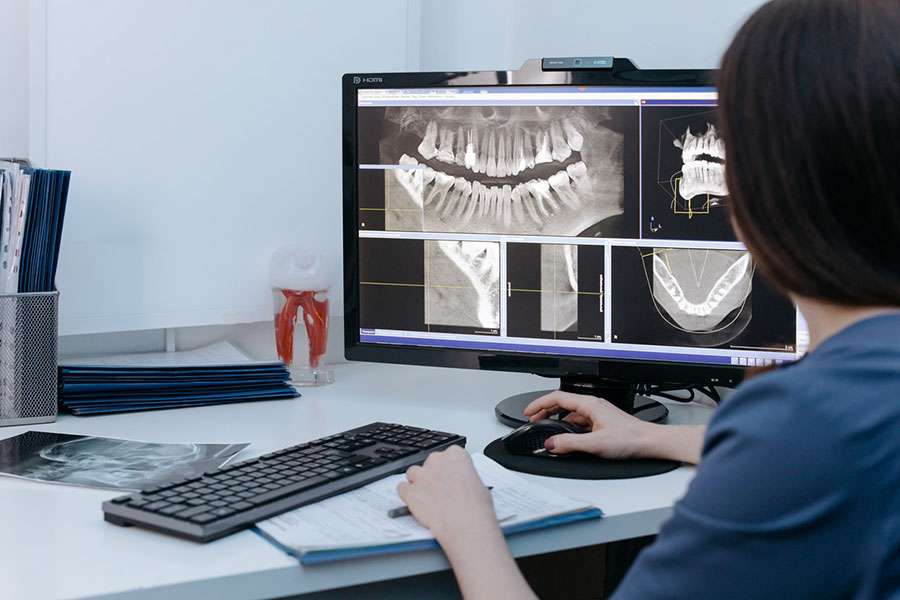

10
Jun
Dental X-Rays: Everything You Need to Know

If you’re like most people, you probably don’t think about dental x-rays very often. But they are an important part of oral care, and it’s important to understand them before you get one. That’s why the Boise dentists at Summit Dental Group would like to discuss what dental x-rays are, why they are used, and what you can expect from them. We will also answer some common questions about dental x-rays. So if you’re curious about this type of imaging, keep reading.
What is a Dental X-Ray?
A dental x-ray is a type of imaging that uses low levels of radiation to create an image of your teeth and bones. This image can help your dentist or oral surgeon identify problems with your teeth, gums, and jaws.
Why Are Dental X-Rays Used?
Dental x-rays are used for a variety of reasons. They can be used to:
- Check for cavities
- Look for tooth decay
- Detect problems with the roots of your teeth
- Find tumors or growths in the jawbone
What Can I Expect From a Dental X-Ray?
Getting a dental x-ray is quick and easy. The process usually takes less than five minutes. First, you will sit in a chair and bite down on a small piece of film. Then, the x-ray machine will be positioned over your mouth. You may feel slight pressure while the x-ray is being taken. Once the image is complete, you can go about your day as usual.
Are Dental X-Rays Safe?
Yes, dental x-rays are safe. The amount of radiation you’re exposed to during a dental x-ray is very low. In fact, it’s less than the amount of radiation you’re exposed to from everyday activities like flying in an airplane or watching television. If you’re pregnant or think you might be pregnant, tell your dentist before having a dental x-ray.
There are no known side effects of dental x-rays. However, if you’re pregnant, there is a small chance that the radiation from a dental x-ray could harm your baby. This is why it’s important to tell your dentist if you think you might be pregnant.
Why are Dental X-Rays Necessary?
Dental x-rays are an important part of oral care. They can help your dentist or oral surgeon find problems with your teeth, gums, and jaws. They can also help them plan treatment for these problems. If you’re pregnant, dental x-rays are especially important. This is because pregnancy can cause changes in your mouth that may not be visible to the naked eye.
For example, pregnancy can cause gum disease. Gum disease is a serious condition that can lead to tooth loss. Dental x-rays can help your dentist or oral surgeon find gum disease early so that it can be treated before it becomes a serious problem.
Are There Any Alternatives to Dental X-Rays?
Yes, there are alternatives to dental x-rays. These include:
- Intraoral cameras: Intraoral cameras are small, hand-held cameras that take pictures of your mouth.
- CT scans: CT scans use X-rays and computers to create three-dimensional images of your teeth and jaws.
- MRI: MRI uses magnetic fields and radio waves to create images of your teeth and jaws.
How Often Should I Get a Dental X-Ray?
The frequency of dental x-rays depends on your age, oral health, and the reason for the x-ray. For example, if you have gum disease, you may need more frequent dental x-rays than someone who doesn’t have gum disease. As a general rule, most people should get a dental x-ray every one to two years.
If you have any questions about dental x-rays, be sure to ask your dentist or oral surgeon. They will be happy to answer your questions and help you make an informed decision about whether or not a dental x-ray is right for you.
How Much Does a Dental X-Ray Cost?
The cost of a dental x-ray varies depending on the type of x-ray and where you have it done. For example, a panoramic x-ray (an x-ray that shows all of your teeth at once) may cost more than a single tooth x-ray. In general, dental insurance plans cover the cost of one or two dental x-rays per year. However, some plans may not cover the cost of certain types of x-rays, such as CT scans or MRI.
Schedule a Dental Consultation
If you’re due for a dental x-ray or have questions about whether or not a dental x-ray is right for you, schedule a consultation with the Boise dentists at Summit Dental Group. They will be able to answer your questions and help you make an informed decision about your oral health.
To learn more about dental x-rays or to schedule a consultation, contact us today by filling out our online form or give us a call at (208) 314-2275.

